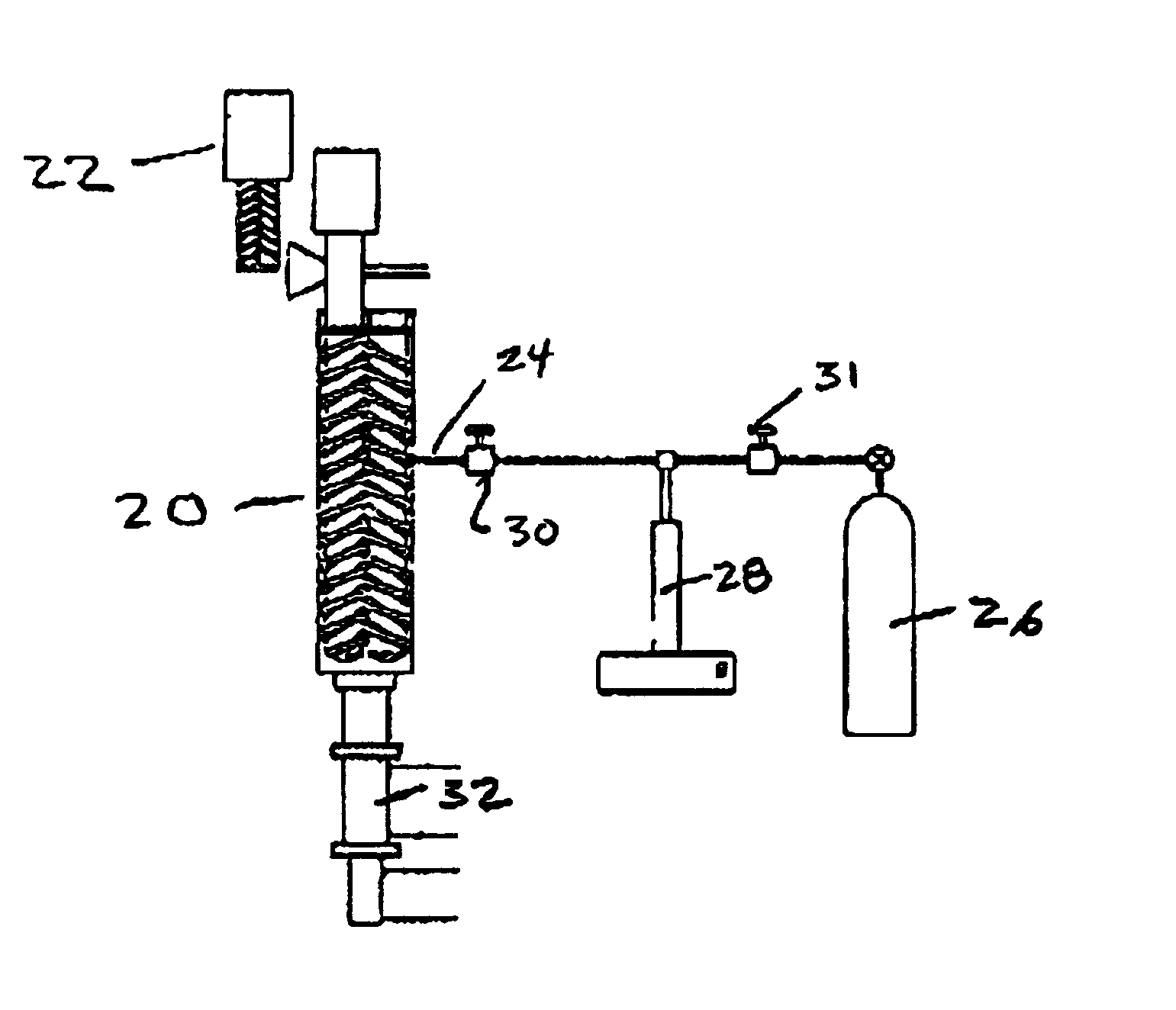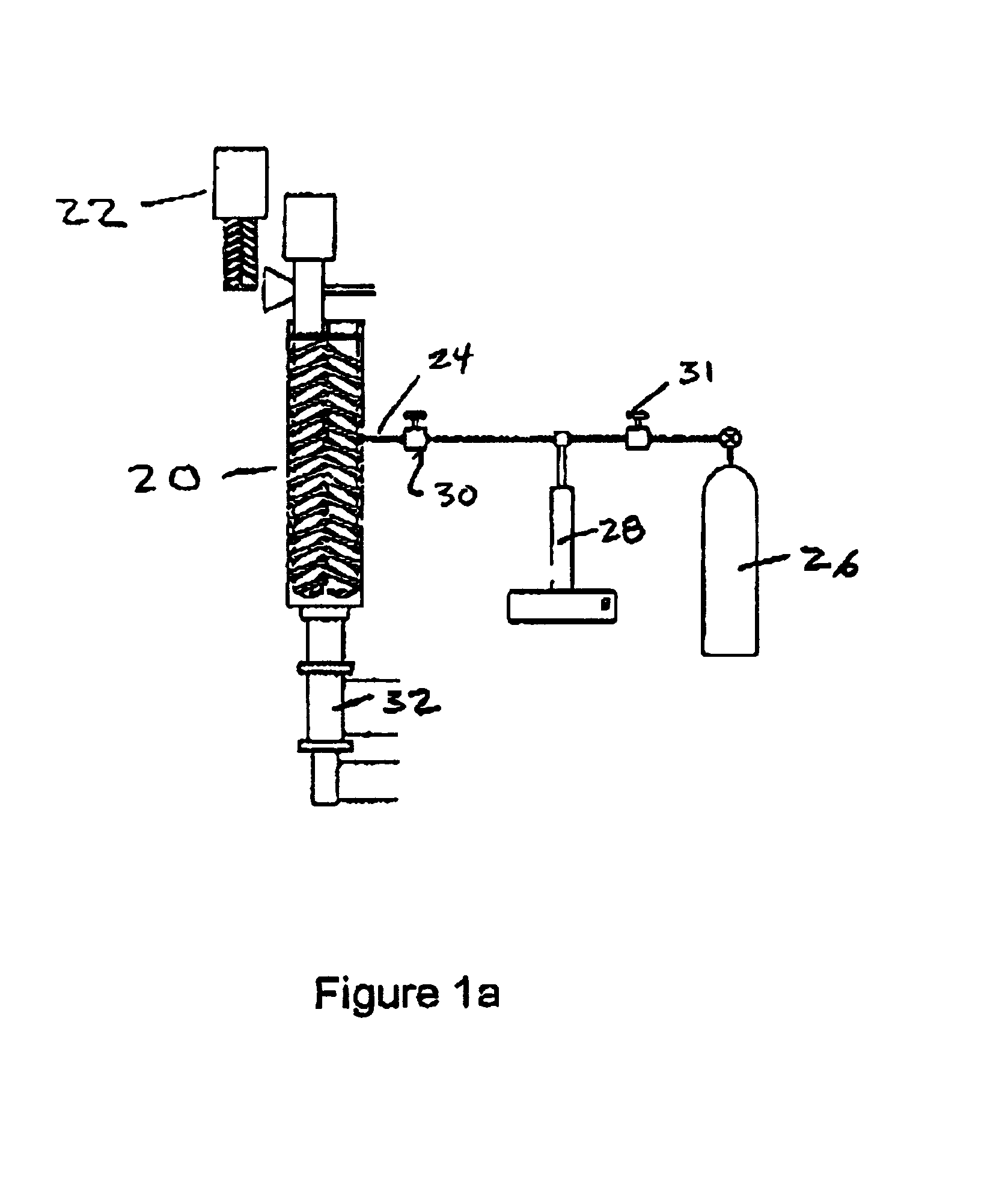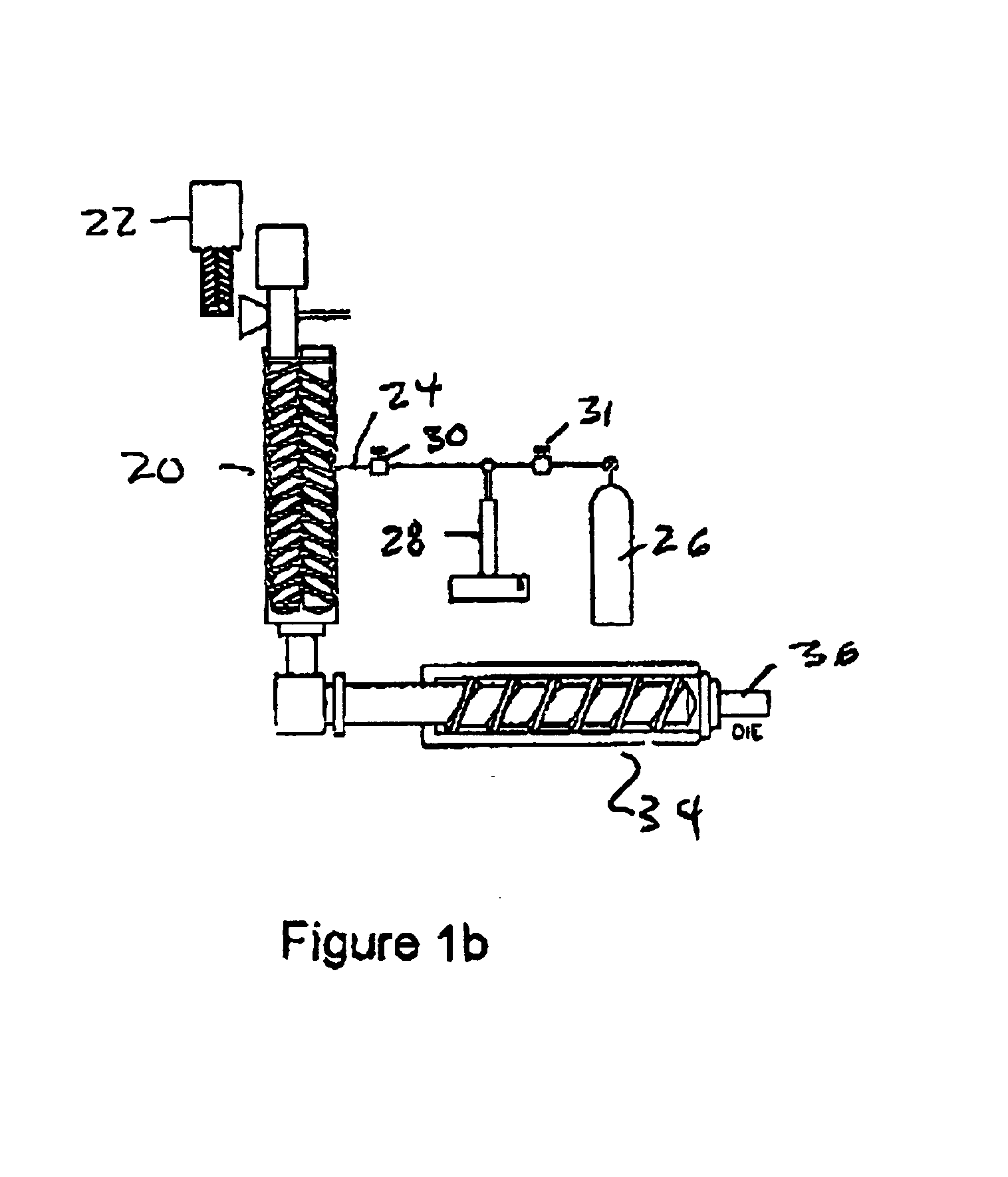Plastic wood fiber foam structure and method of producing same
a technology of wood fiber foam and composite foam, which is applied in the field of continuous production of plastic/wood fiber composite foam, can solve the problems of insufficient moisture content definition in the conventional moisture content formula, the foam structure is very uniform, and the potential industrial application of wood fibers is limited. to achieve the effect of preventing any damage to wood fibers
- Summary
- Abstract
- Description
- Claims
- Application Information
AI Technical Summary
Benefits of technology
Problems solved by technology
Method used
Image
Examples
example for process b
Material
[0074]HDPE Grade 2710 from Nova was used as the base polymer for the composites. 50 wt % standard wood-fibers softwood grade 12020, supplied by American Wood Fibers, were used. 3 wt % coupling agent (Fusabond adhesive resin E-MB-100D from Dupont, Canada) was used for improving the adhesion between the PE and the wood-fiber. Commercial CO2, upto 4 wt %, from Matheson Gas was used as the PBA. All the materials were used as received.
Experimental Setup and Procedure
[0075]A schematic of the equipment for process B is shown in FIG. 2a. In the preparatory stage, un-dried wood-fiber is mixed with the polymer powder / pellets, a coupling agent, and a nucleating agent such as talc in a dry blending tumbler, and fed into the first twin-screw extruder 40, using a feeder 22. The temperature at the exit of this extruder was maintained at the highest processing temperature, which in this case was 180° C., for completely vaporizing the moisture and other volatiles from the wood-fiber. The out...
example for process d
Material
[0088]HDPE Grade 58G from Novacor was used as the base polymers for the composites. The wood-fibers were standard softwood (pine) grade 12020, supplied by American Wood Fibers. The CBA, Hydrocerol Compound (HC), was supplied by Boehringer Ingelheim. The coupling agent used for improving the adhesion between the PE and the wood-fiber was Fusabond adhesive resin E-MB-100D from Dupont, Canada. All the materials were used as received.
Experimental Setup and Procedure
[0089]The cascade or tandem extrusion system shown in FIG. 4a was used in the experiments. The mixtures were dry blended and fed into the first twin-screw extruder 40, using a feeder 22. The temperature in this extruder was maintained at a level sufficient for vaporizing the moisture (145° C. to 170° C.), but not so high as to cause the decomposition of CBA and the degradation of wood-fiber. The output of this extruder was fed into the second extruder 42. At the interconnection, which was open to atmosphere, substanti...
PUM
| Property | Measurement | Unit |
|---|---|---|
| temperature | aaaaa | aaaaa |
| temperature | aaaaa | aaaaa |
| processing temperature | aaaaa | aaaaa |
Abstract
Description
Claims
Application Information
 Login to View More
Login to View More - R&D
- Intellectual Property
- Life Sciences
- Materials
- Tech Scout
- Unparalleled Data Quality
- Higher Quality Content
- 60% Fewer Hallucinations
Browse by: Latest US Patents, China's latest patents, Technical Efficacy Thesaurus, Application Domain, Technology Topic, Popular Technical Reports.
© 2025 PatSnap. All rights reserved.Legal|Privacy policy|Modern Slavery Act Transparency Statement|Sitemap|About US| Contact US: help@patsnap.com



